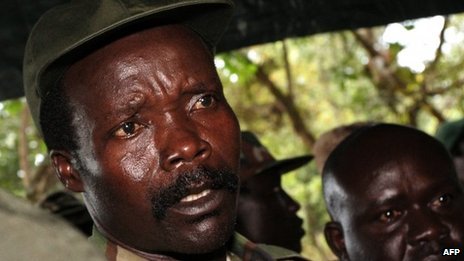“The conflict in northern Uganda is the biggest forgotten, neglected humanitarian emergency in the world today.” –Jan Egeland, former Under-Secretary-General of the UN
During Kony 2012, we made Joseph Kony a household name and brought international attention to the atrocities committed by the Lord’s Resistance Army. Since that time, much of the hype and media attention surrounding Kony’s injustices has died down, but the counter-LRA mission is far from over.
Here at Invisible Children, we are determined not to let the world forget about Kony’s crimes – especially as we come up on the 9th year anniversary of his indictment by the International Criminal Court. We are still working daily to capture him and put an end to this conflict, and that goal requires everyone’s commitment. In light of the political and military forces working together to stop the LRA, we remain optimistic that the fight will soon be over – but only if we keep the world’s attention focused on this crisis.
This article from Newstatesman emphasizes the need to keep the LRA issue a priority – even if it’s not at the top of your newsfeed.

++
Africa’s Forgotten Scourge: Joseph Kony and the Lord’s Resistance Army
In the past year, Joseph Kony is said to have been responsible for killing 76 civilians and abducting 467. Despite the lack of international coverage, an African operation to kill or capture him continues. Martin Plaut talks to its leader, Brigadier General Sam Kavuma.
Once they were at the top of the African crisis agenda, but ebola, civil war in South Sudan and the atrocities of Boko Haram have driven them out of the headlines. It is hard to find a single mention of Joseph Kony or his murderous Lord’s Resistance Army (LRA) in the international media.
Yet they have not gone away. The charity Invisible Children, which tenaciously tracks the LRA says that it killed two people in the last month and abducted 26 more. In the past year Kony is said to have been responsible for killing 76 civilians and abducting 467. Behind these cold statistics is a trail of shattered lives: of villages living in terror and women too frightened to go to the fields to plant or harvest.
Kony, and his killers, are now hunted across a vast area of Central Africa. “There are probably no more than 100 fighters with Kony,” says Brigadier General Sam Kavuma, who is leading the African operation to kill or capture him. But the general is under no illusion about the scale of the problem. The LRA is dispersed over South Sudan, Sudan, the Democratic Republic of Congo and the Central African Republic. It is an area approximately the size of western Europe and General Kavuma has only around 1,500 troops at his disposal.
Despite this, the general is optimistic. “Kony is no longer fighting – he’s hiding and trying to survive,” he told the New Statesman in a phone interview.
The General’s Regional Task Force should be far larger. The African Union mandate provides for a brigade-size operation of 5,000 troops, drawn from Uganda, the Central African Republic, South Sudan and Congo.
But the civil war in the Central African Republic has meant it has provided General Kavuma with not a single soldier, while the fighting that erupted in South Sudan last December has also reduced its support. One of Uganda’s three battalions was also withdrawn to prop up South Sudanese President, Salva Kiir, in his dispute with his rival, Riek Machar.
Joseph Kony – once a Ugandan church choir boy – has been the scourge of central Africa for more than two decades. Drawn from the Acholi people of northern Uganda, the LRA has used abduction and murder to further its ends and maintain its operations. Kony himself is notoriously canny and wary – characteristics that have allowed him to survive all these years despite the international efforts to kill him.
President Obama established the elimination of Kony as one of his African goals and recently increased the support given to this operation. Several CV-22 Osprey long range, high speed helicopters, plus 150 Air Force Special Operations troops and airmen joined the search.
In the end, though, the problem of the LRA is likely to require a political solution. “We know that 80 per cent of LRA fighters have been abducted themselves,” says General Kavuma. Talks have been tried in the past, but are ruled out for the present. Kony has used previous negotiations and ceasefires to regroup and re-arm his forces. “The Acholi leaders have sent messages to their people to defect and come home,” the general says and this is paying dividends. “Two months ago we had over fifty defectors, including women and children.”
This strategy has American backing from the 7th Military Information Support Battalion. Radio stations have been established to broadcast appeals to the fighters; half a million leaflets have been dropped from the air. Even aerial loudspeakers have been deployed to try to persuade LRA fighters to lay down their weapons and come out of the bush.
This has been a long and a deadly war. Ugandan troops serve for up to two years before going home. General Kavuma has a good reputation and is said to have transformed the African troops into an effective fighting force. But divisions in South Sudan and the Central African Republic have sapped the operation. The LRA is said to be hiding in Kafia Kingi, one of the areas claimed by both Sudan and South Sudan. Kony may still receive backing from Khartoum, although the General says he has no evidence of this.
The fighting is unlikely to end soon. It is simply too low on the international agenda to receive sufficient resources. As one well-informed observer put it: “The LRA is a forgotten force in a forgotten part of the world.”
++
Think people should hear about this?